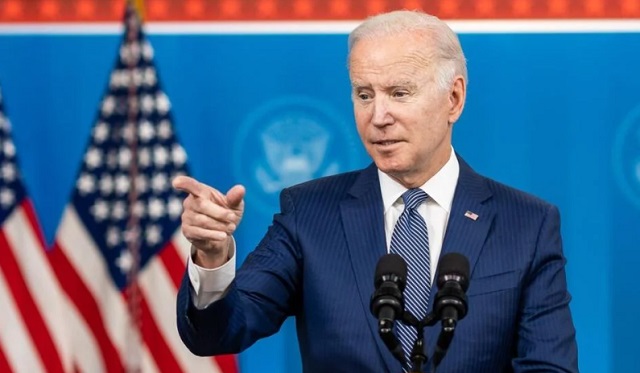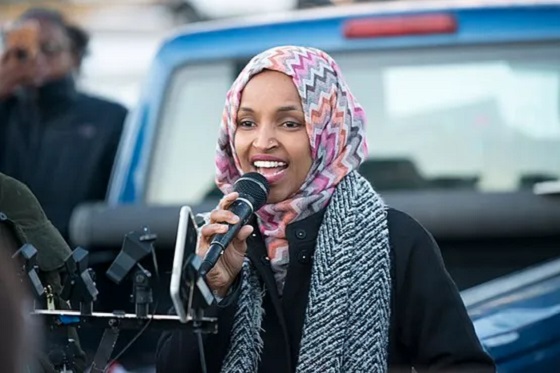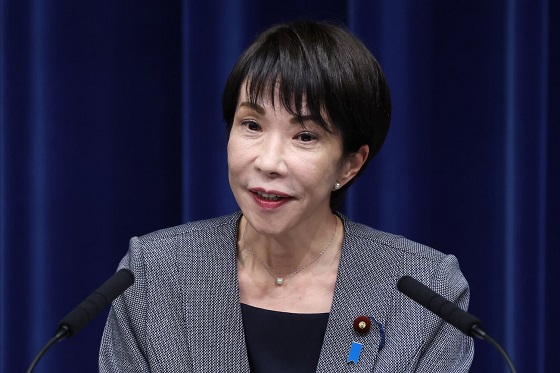Economy
Biden environmental agenda under fire for increasing costs for Americans

By Casey Harper
The Biden administration’s energy policies are increasingly costly for Americans, a newly released report says.
U.S. House Oversight Committee Chair Rep. James Comer, R-Ky., released the report, which argues Biden’s energy policies have increased costs for Americans and hurt the economy.
“The Biden Administration weaponized the power of the executive branch to wage a war against American-made energy production and cement in place radical, far-left energy policies that jeopardize domestic energy development, overload America’s power grid, and raise costs on all American consumers and businesses,” Comer said in a statement.
In particular, President Joe Biden’s recent pause on liquefied natural gas exports, elevated gas prices, and the aggressive push toward transitioning toward electric energy are among the main criticisms lobbed at Biden.
Comer’s office cites analysis from the right-leaning American Action Forum released in April. AAF reports that in 2024 alone, Biden’s Environmental Protection Agency, as of the end of April, had proposed 38 new rules and finalized 63 rules. According to AAF, those rules total 33,138 pages and will cost the U.S. economy over a trillion dollars.
The report also highlights the cost of pushing America’s energy needs increasingly to the electric grid.
From the report:
Even as use efficiency improves, the U.S. Energy Information Administration projects U.S. utility-generated electricity demand to continue growing at an average annual rate of one percent through 2050. But radical new policies and regulations promulgated by the Biden Administration seek to transform power generation and electricity markets. The Biden Administration is moving to replace highly reliable and affordable existing sources of energy with new sources that are typically less reliable and more expensive. For consumers, the results of these initiatives will predictably be higher costs on utility bills, higher costs for goods and services that consume electricity, invisible energy subsidy costs paid through income and other taxes, as well as economic costs as high electricity prices push some business opportunities overseas.
The White House has cited climate change concerns as it rolled out several policies, including a pause on new export sites for liquefied natural gas.
That LNG pause has been particularly controversial, with a coalition of state and Congressional leaders rallying opposition against it. A lawsuit challenging the constitutionality has been filed by a coalition of states.
Biden’s Department of Energy has defended the decision and stressed that it will not stop any currently existing sales. The White House has also argued that the U.S. is already a leading exporter without new sales.
“Before issuing any new LNG export decisions, DOE is embarking on a transparent process to ensure we are using the most up-to-date economic and environmental analyses to determine whether additional approvals of LNG exports to non-FTA countries are in the ‘public interest,” the DOE said in a February post defending the decision.
Meanwhile, federal climate-related spending has come under fire.
During a news conference last week, U.S. Sen. Shelley Moore Capito, R-W.Va., sparked headlines by exposing that federal funds went to a climate group that was actively supporting the Oct. 7 Hamas attack on Israel, an attack that included rape, killing children, and hostage-taking.
“We went to the website of Climate Justice Alliance. This is what we found on the website that our taxpayer dollars are going to organizations such as this,” she said, referencing a pro-Hamas photo reportedly found on the group’s website.
Comer’s reports come as Biden’s Secretary of Energy, Jennifer Granholm, took questions from lawmakers last week about Biden’s energy policies.
Republicans took her to task for the increased costs Americans are facing. Energy costs have risen over 35% since Biden took office, according to federal data.
During the hearing, Granholm defended her agency’s work, including Biden’s decision to drain the nation’s Strategic Petroleum Reserve earlier in his term to help address soaring gas prices.
“The Administration remains committed to maintaining a robust and well-functioning SPR. In 2022, in response to Russia’s invasion of Ukraine and the resulting disruptions in the oil market, the President directed the sale of 180 million barrels,” Granholm said in her written testimony. submitted to the committee. “The emergency sales provided supply certainty and acted as a bridge until domestic production increased, which in turn helped to mitigate the cost increases for American families.”
Business
Dark clouds loom over Canada’s economy in 2026

From the Fraser Institute
The dawn of a new year is an opportune time to ponder the recent performance of Canada’s $3.4 trillion economy. And the overall picture is not exactly cheerful.
Since the start of 2025, our principal trading partner has been ruled by a president who seems determined to unravel the post-war global economic and security order that provided a stable and reassuring backdrop for smaller countries such as Canada. Whether the Canada-U.S.-Mexico trade agreement (that President Trump himself pushed for) will even survive is unclear, underscoring the uncertainty that continues to weigh on business investment in Canada.
At the same time, Europe—representing one-fifth of the global economy—remains sluggish, thanks to Russia’s relentless war of choice against Ukraine, high energy costs across much of the region, and the bloc’s waning competitiveness. The huge Chinese economy has also lost a step. None of this is good for Canada.
Yet despite a difficult external environment, Canada’s economy has been surprisingly resilient. Gross domestic product (GDP) is projected to grow by 1.7 per cent (after inflation) this year. The main reason is continued gains in consumer spending, which accounts for more than three-fifths of all economic activity. After stripping out inflation, money spent by Canadians on goods and services is set to climb by 2.2 per cent in 2025, matching last year’s pace. Solid consumer spending has helped offset the impact of dwindling exports, sluggish business investment and—since 2023—lacklustre housing markets.
Another reason why we have avoided a sharper economic downturn is that the Trump administration has, so far, exempted most of Canada’s southbound exports from the president’s tariff barrage. This has partially cushioned the decline in Canada’s exports—particularly outside of the steel, aluminum, lumber and auto sectors, where steep U.S. tariffs are in effect. While exports will be lower in 2025 than the year before, the fall is less dramatic than analysts expected 6 to 8 months ago.
Although Canada’s economy grew in 2025, the job market lost steam. Employment growth has softened and the unemployment rate has ticked higher—it’s on track to average almost 7 per cent this year, up from 5.4 per cent two years ago. Unemployment among young people has skyrocketed. With the economy showing little momentum, employment growth will remain muted next year.
Unfortunately, there’s nothing positive to report on the investment front. Adjusted for inflation, private-sector capital spending has been on a downward trajectory for the last decade—a long-term trend that can’t be explained by Trump’s tariffs. Canada has underperformed both the United States and several other advanced economies in the amount of investment per employee. The investment gap with the U.S. has widened steadily since 2014. This means Canadian workers have fewer and less up-to-date tools, equipment and technology to help them produce goods and services compared to their counterparts in the U.S. (and many other countries). As a result, productivity growth in Canada has been lackluster, narrowing the scope for wage increases.
Preliminary data indicate that both overall non-residential investment and business capital spending on machinery, equipment and advanced technology products will be down again in 2025. Getting clarity on the future of the Canada-U.S. trade relationship will be key to improving the business environment for private-sector investment. Tax and regulatory policy changes that make Canada a more attractive choice for companies looking to invest and grow are also necessary. This is where government policymakers should direct their attention in 2026.
Business
Land use will be British Columbia’s biggest issue in 2026
-

 Business1 day ago
Business1 day agoDisclosures reveal Minnesota politician’s husband’s companies surged thousands-fold amid Somali fraud crisis
-

 Alberta1 day ago
Alberta1 day agoThe Canadian Energy Centre’s biggest stories of 2025
-

 Business2 days ago
Business2 days agoCanada needs serious tax cuts in 2026
-

 Business2 days ago
Business2 days agoDOOR TO DOOR: Feds descend on Minneapolis day cares tied to massive fraud
-

 Business1 day ago
Business1 day agoResurfaced Video Shows How Somali Scammers Used Day Care Centers To Scam State
-

 Business13 hours ago
Business13 hours agoThe Real Reason Canada’s Health Care System Is Failing
-

 Bruce Dowbiggin2 days ago
Bruce Dowbiggin2 days agoIn Contentious Canada Reality Is Still Six Degrees Of Hockey
-

 Business1 day ago
Business1 day agoMinneapolis day care filmed empty suddenly fills with kids




